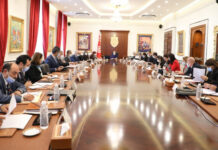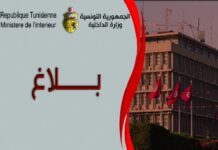The Medina of Tunis, an Arab Mediterranean Metropolis is a huge and distinctive collective book of a very rich content, contributed by Abdelaziz Doulatli, with the support of Professor of History and Islamic Archeology and President of the Mediterranean Congregation, Michel Terras, and with contributions from Faouzi Mahfoudh and Saloua Darghouth. The French translation of the book was undertaken by Abdelhafidh Hargam and Naser Baklouti.

This distinguished book was published as a contribution from the Agency for the Revival of Heritage and Cultural Development, as part of the activities of Tunis Capital of Islamic Culture 2019, as well as to celebrate the fortieth anniversary of the inscription of the Medina of Tunis on the World Heritage List by UNESCO in 1979.
The Medina of Tunis has alwas attracted historians, researchers and writers with its distinguished location as well as its rich architecture which is a mixture of Arab-Islamic and European-Mediterranean varieties, as well as the impact of the multiple civilizations that passed through the region along the different historical stages.
The Medina of Tunis abounds with a distinctive cultural diversity, which makes it the Arab Mediterranean metropolis par excellence, a mirror that reflects the cultural pluralism whose fingerprints do not disappear from this city.
Professor of History and Islamic Archeology Michel Terras says, talking about the book, ” Tunisia, an Arab Mediterranean metropolis, is read as an adventure novel, and it presents to the reader’s eyes a living museum that leads each of us towards successive discoveries analyzed in depth and at length.”
Those who look closely at the city of Tunis will notice that it is a very rich mosaic, as every part of it tells history and art: mosques, churches, shrines of the saints and the righteous, an old city and a modern one, alleys, neighborhoods, archaeological sites, doors, houses, palaces, and markets… Names of women and men who made their mark in their times. History is present in all its corners, heritage is alive and does not die.
This wonderful mosaic was embodied and talked about at length in this book, which represented an open museum in space and time.
It is a mixture of articles and studies supported by modern and old photographs, writings, drawings, plastic arts, maps, and precious testimonies that have increased its great scientific and documentary value.
Abdelaziz Doulatli says: “The reader of this book can follow the intellectual and literary movements, religious trends, social transformations, and artistic creations of crafts, traditional industries, music and plastic arts, along with the customs and traditions of daily life throughout the ages.”
Mahdi Najjar says in the preface to the book:
“This position came in consideration for objective reasons, as [the city of Tunis] is one of the oldest cities in the Maghreb, which, thanks to its geographical location at the crossroads of sea routes and desert caravans in North Africa and in the east of the southern banks of the Mediterranean, has contributed to the dissemination of cultural values with a human dimension, especially after its rise since the time of the Almohads and then the Hafsids to one of the largest and richest capitals in the Arab and Mediterranean world.”











